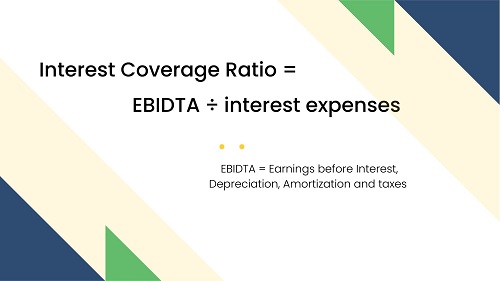What Is Interest Coverage Ratio & How to calculate?
Interest Coverage Ratio signifies the company company’s ability to pay interest on the outstanding debt. It is calculated to measure company’s profits in comparison to its interest obligation. ICR determines that how easily (or with difficulty) an entity can pay its interest obligation on the Debt.
How to calculate Interest Coverage Ratio?
The formula to calculate the interest coverage ratio is as under:
Earnings before Interest, Depreciation, Amortization and taxes (EBIDTA) ÷ Total interest expenses
The EBIDTA represent the Operating Profit before Depreciation, Interest and Amortization. In other words, it is the cash profit before accounting for interest and taxes.

Example for Interest Coverage Ratio
Following is an excerpt of a Profit & Loss Account:
| Description | Amount |
|---|---|
| Sale | 100 |
| Other Expenses | 20 |
| Interest Expense | 25 |
| Depreciation | 30 |
| Profit Before Tax (PBT) | 25 |
| Tax | 10 |
| Profit after Tax (PAT) | 15 |
EBIDTA will be = PBT (25) + Depreciation (30) +Interest (25) = 80
Interest Coverage Ratio or ICR will be = EBIDTA (80) / Interest (25) = 3.20 times
It means that the cash profits (before interest) of the company can cover 3.20 times of its interest expense.
Higher the ICR, better the company’s position to pay its interest obligation.
What should be the minimum ICR?
Although ICR below 1.50 is not considered good, however, it should be atleast more than 1 so that company is able to meet its interest obligation. An Interest coverage ratio below 1 signify that the company is not able to serve its interest obligation as the interest is more than the cash profit.
ICR of 2 & above is considered good.
A company with lower ICR will have difficulty in meeting its interest obligation whenever the interest rates goes up.
Another way to calculate Interest coverage ratio is = EBIT / Interest. However, in our opinion the first method is more accurate measure. In the second method depreciation is also accounted for expense for calculating the entity’s interest paying capacity, while depreciation is not a cash expense.


